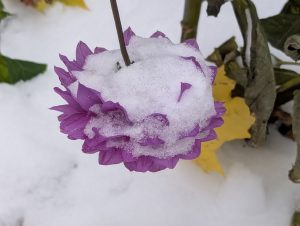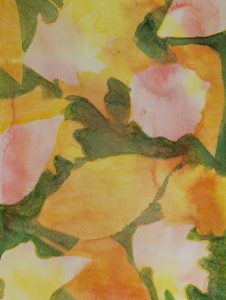
Part 1: Winter’s Gifts: An Indigenous Celebration of Nature by Kaitlin Curtice illustrated by Gloria Felix
A citizen of the Potawatomi nation, Kaitlin Curtice has created a beautiful story explaining the importance of loving the earth at the winter solstice. I have read this book to classes from kindergarten to grade 3, using the story to expose children to Indigenous perspectives and to better understand the solstice and the significance it holds.
Before Reading – Minds On
Have students think about the late sunrises and early sunsets that have been happening. How has this natural change impacted their lives? Have their routines changed? Review the concept of the winter solstice, helping them understand that the daylight hours decrease until December 21st , then there will be increasingly more daylight each day until we reach summer solstice. I like to demonstrate using students to play the role of sun and earth and show that earth orbits the sun and has a tilt that causes the changes in how much sunlight we receive.
During Reading
During the read aloud I will stop and ask questions about what they have noticed about the change in seasons. We might discuss how our clothing changes to warmer jackets, boots, mittens and hats or we might focus more on animal behaviour and how the animals we see are adapting to the season. The story focuses on winter being a time of rest, do the students agree or disagree? Can they explain their thinking? There is also an opportunity to review the Potawatomi perspective in the story about sun, moon and earth who are described as grandfather, grandmother and mother.
After Reading
Depending on the age and stage of the class, I will make a t-chart with the words Goodbye and Hello as headings. Under “Goodbye” we list the activities, weather, clothing, etc, that end in the season of fall/autumn. Similarly, under the heading “Hello” we list what is expected in winter. With older students, this could be completed independently. Now students can take those ideas and create a Goodbye Fall, Hello Winter poem with artwork to accompany their poem.
Part 2: Follow Up – Goodbye Autumn, Hello Winter by Kenard Pak
The children in this story greet natural features such as wind, leaves, snow and birds. The children say hello to them and they get a reply explaining what that particular feature is doing in the season of autumn. It is critical to pay attention to the illustrations in this story because they are telling a story of their own. On each page, the children are walking through different environments: fields, forests, a farm, and a town. The signs of winter begin to show as the book progresses, ending with the children back in the field from the first autumn illustration in the book but now it is a winter scene.
The watercolour illustrations inspire students to create detailed sketches and paintings showing the change in seasons. The subject of their art could be the same focus as their Goodbye Autumn, Hello Winter poem. There are hints in this book that it is set at the time of the winter solstice and there are references to decorations and gift shopping that leave us wondering what they are celebrating.
Since I am new to using watercolour paints, I use tutorials from Andrea Nelson to help me learn. I have included a recent fall painting as an example. I believe our students could create something similar.
I hope your students enjoy the chance to write and paint about this season change.
Brenda

